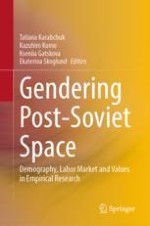2021 | OriginalPaper | Buchkapitel
6. The Gender-Specific Determinants of Labour Supply in Rural and Urban Contexts: Evidence from Armenia’s Transition Economy
verfasst von : Serafima Chirkova, Sona Kalantaryan
Erschienen in: Gendering Post-Soviet Space
Verlag: Springer Singapore
Aktivieren Sie unsere intelligente Suche, um passende Fachinhalte oder Patente zu finden.
Wählen Sie Textabschnitte aus um mit Künstlicher Intelligenz passenden Patente zu finden. powered by
Markieren Sie Textabschnitte, um KI-gestützt weitere passende Inhalte zu finden. powered by
